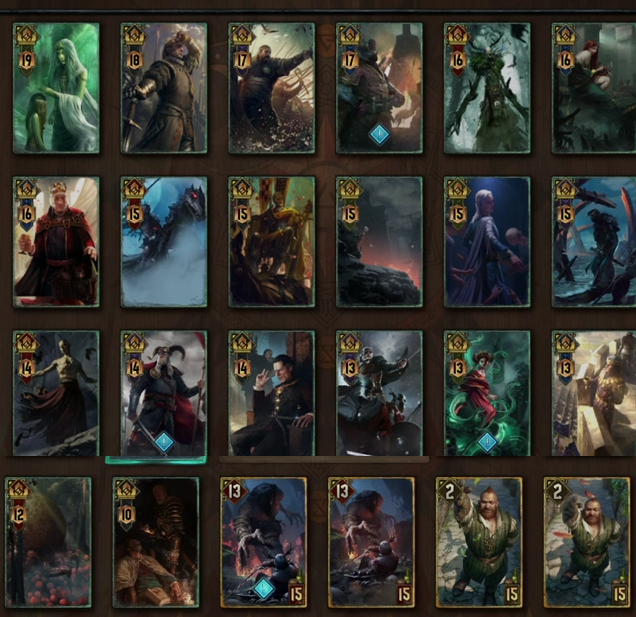

Rapid Reaction: The Mulligan Update Developer Stream
Many thanks to SwanDive for taking notes I used while writing this Rapid Reaction.
On 7 January 2019, CD Projekt Red broadcast a developer stream focused on upcoming changes to the redraw (or “mulligan”) system. You can watch the stream for yourself in the video below:
What's Changing?
- All decks, regardless of leader, will get two mulligans per round
- The player going first will receive a third mulligan in Round 1
- If a player would draw a card beyond the tenth, that draw is converted into a mulligan for the next round
- Leaders now give different Recruit Cap points to add to a base Recruit Cap of 150
- Sihil now has Cooldown: 2 (up from 1) and a reduced provision cost of 11
- Letho of Gulet is removed from the game loses his ability until the end of January (Thanks to Reddit user justincaseonlymyself for the correction)
- Botchling and Lubberkin will revert to base power when transforming
- All these changes are coming sometime during the week after 7 January 2019
What Isn't Changing?
- Quantity of cards drawn at the start of each round
- Tactical Advantage to balance both sides of the coin flip
What Does It All Mean?
For a short stream, there was a lot to take in! Let's go through things point by point.
First, the new mulligan system allows for more flexible deployment of cards throughout three rounds. For example, while it will still be correct to mulligan away all but one card in the "Witcher trio" of Eskel, Lambert, and Vesemir, players no longer face the pressure of playing the Witcher trio out automatically in Round 1, as they will always get the opportunity to mulligan extra Witcher trio cards if they are redrawn in later rounds.
The bonus mulligan for the player going first in Round 1 continues past Homecoming practice, though the use-it-or-lose-it nature of the bonus mulligan weakens it slightly as an advantage relative to pre-update. Still, the increased availability of mulligans creates incentives to build polarized decks with high-value gold cards and low-value bronzes that look to keep the former and mulligan away the latter. These incentives will be stronger in strategies focused on value rather than synergy.
Speaking of mulligans, the new conversion of draws past ten cards into mulligans disrupts the hard and soft caps on passing in Round 1 that Gnurrgard pointed out in an earlier article for Team Aretuza. While Gwent is unlikely to see a return of the pre-Homecoming Round 1 drypass — a drypass Round 1 allows the opponent to get back to even on cards immediately and dictate Round 2 in its entirety — playing down to seven cards in Round 2 is no longer a requirement, as players can just use extra mulligans rather than risk losing a key card to overdrawing.

Screenshot taken by Reddit user Orwald
With all leaders getting the same number of mulligans, they needed a new balancing tool. Enter the provision system. In November 2018, I noted in an article how flexible and ingenious the provision system was when applied to a digital card game, and CD Projekt Red will expand it to leaders in the update, with all decks having a base recruit cap of 150 and each leader adding its own value to increase that cap. A value of 15 corresponds to the existing total recruit cap of 165.
Without dragging this Rapid Reaction out by recapping all the costs, a few highlights:
Usurper has the lowest total recruit cap so far, at 160, taking a sharp hit for being able to disrupt the opponent's leader; Arachas Queen follows at 162, a sign of how much stronger its synergistic ability will become with more mulligans.
Eithné has the highest recruit cap at 169 and Morvran Voorhis the second-highest at 168, both clear nudges in power level to compensate for their recent nerfs.
No other leader is more than two points away from 165.
As for individual cards, aside from Letho of Gulet losing its ability for the rest of the month, the biggest news is the promised change to Sihil. The polarizing card will have Cooldown: 2 post-patch, up from Cooldown: 1. While a carefully planned and modestly lucky Sihil can still deal 15 points of damage over the course of a maximum-length round, it no longer challenges the opponent to answer it or effectively lose on the spot. Its recruit cost of 11, down from 15, is generous — likely too generous. I will have the new Sihil in mind as I build decks post-patch.
When?
The big question left unanswered by the stream is precisely when the changes will take place. For now, CD Projekt Red is waiting for approval from certification authorities to set everything live, and "this week" could mean anything from Tuesday to Sunday. This creates a dilemma for players, particularly Pro Rank players: Should they try to get games in before the patch arrives?
The correct answer likely varies between people. For someone who likes the old Sihil strategy, playing now is obvious. Those who like blazing trails or an unsettled metagame may prefer to wait.
Either way, Gwent is in for interesting times. Best of luck to you as you explore the changed game!

Author
lordgort
"Professional hobbyist" lordgort makes his money helping others enjoy their leisure, whether as an auction catalog writer, copy editor for a Magic: The Gathering strategy site, or game show contestant (lifetime winnings: $5000). A Magic columnist for seven years, in 2018 he turned to Gwent, swiftly reaching the Pro ranks. Off the clock, he relaxes by writing and editing Gwent articles and contributing to Aretuza Academy. A longtime game show fanatic, he appeared on Who Wants To Be A Millionaire in 2018.




